Carmen Ansaldo – 29 December, 2011
Mathews has perceptibly reconsidered the motivations of the original Conceptual Art movement by interpreting the recent trend of artists democratising the execution of their practice as the next step within the genre's canon. The result is lucid, compelling and (perhaps counter-intuitively to the original intention of Conceptual art) honestly heartwarming.
Melbourne
International group show
Power to the People: Contemporary Conceptualism and the Object in Art
Curated by Hannah Mathews
6 October - 20 November 2011
Australian Center of Contemporary Art associate curator Hannah Mathews has outdone herself in the recently concluded exhibition Power to the People: Contemporary Conceptualism and the Object in Art. Commissioned as part of the Melbourne Festival, Power to the People involves over 15 artists from Australia and abroad responding to the movement of Conceptual art which established itself in the US and Europe during the 60s and 70s by interrogating the status of the art object through privileging conceptual imperatives over aesthetic ones. In Power to the People, Mathews has perceptibly reconsidered the motivations of this original movement by interpreting the recent trend of artists democratising the execution of their practice as the next step within the canon of Conceptual Art. The result is lucid, compelling and (perhaps counter-intuitively to the original intention of Conceptual art) honestly heartwarming.
Mathews identifies a moving away from the interrogation of ‘me’ as it was explored in the conceptual development of the Young British Artists of the 90s, toward a new focus on ‘we’. This shift is demonstrated in each artist’s interrogation of the overlapping relationships between artists, viewers and other disciplines. By focusing on the ‘we’ which results from the alignment of artist and viewer to realise a project, Power to the People widens the scope of Conceptual art; forfeiting the artist’s role as the sole owner of their output in preference for the unpredictable contributions of audience participation and interaction. Similarly, some artists complicate the assumptions attached to their role by choosing to explore concepts external to the aesthetic. By doing so they consequently generate ‘art’ objects which carry as many implications to these external fields as they do for visual art.
This is not to say that audience interaction and participation within the artwork is new. Particularly for the major publically funded galleries, such involvement is an almost mandatory inclusion in any group show of contemporary international art. What makes the approach of Power to the People different is the due care that has been taken to ensure this interaction is never at the expense of concept. This does not mean that the division between art and entertainment is never straddled however - Natasha Johns-Messanger’s installation of a hall of mirrors, titled Yellow; and Peter Friedl’s contribution of a set of animal suits which could be worn around the gallery to view the artwork, both present clear examples of such playfulness. However, it is the self-consciousness that these projects demonstrate which allow the often light-heartedness of such pieces to remain true to the curatorial intention.
This self-consciousness was also extended to the role of the artist themselves. Ian Milliss and Lucas Ihlien’s presentation of their research into Australian inventor and agriculturalist P. A. Yeomans provides a clear example. The Yeomans Project, sitting somewhere between eco-art, personal research and pure data, not only challenges the artist’s role within this undertaking but re-positions Milliss and Ihlien’s art as secondary to the work of Yeomans himself. Dora Garcia’s performance which involves a writer appointed by the artist sitting in the gallery at a computer, documenting in real time the actions of gallery patrons as she observes them and projecting these observations onto a screen above her head for all to see, rendered the artist entirely dependent on the visitors in their interaction with the works of other artists for its own success as a project (a pretty fun success as well, if you decided to don one of Friedl’s animal suits for Garcia to write about). Mathews’ inclusion of side events within the exhibition program (including the much talked-about naked tours conducted by the artist Stuart Ringholt) contributed to the overall energy. However, she was also successful in ensuring that missing out on these events did not hinder the experience of the exhibition itself.
This energy present in Power to the People, what made this exhibition so successful, was each artist’s unfettered reliance on the audience, on extra-art disciplines or on each other for their substance. Such reliance was sincere, socially conscious and optimistically constructive in quality. None of the ironic or cynical qualities Postmodernism seemed to make inseparable from such an exploration could be found in the earnest intention of these works. In short, Mathews has demonstrated perfectly what exceptional results emerge when we privilege empowerment over entertainment when involving the audience in the realisation of the contemporary work of art.
Carmen Ansaldo
Recent Comments
John Hurrell
Last year Peter Friedl gave an amazing talk at ARTSPACE. Over the years I've been to a zillion artist talks, ...
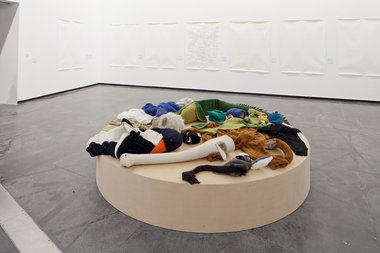

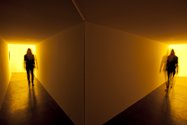
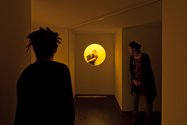
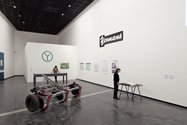
 Two Rooms presents a program of residencies and projects
Two Rooms presents a program of residencies and projects Advertising in this column
Advertising in this column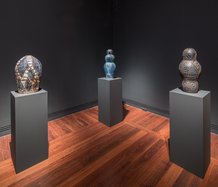

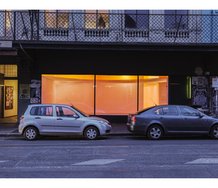

This Discussion has 1 comment.
Comment
John Hurrell, 11:14 p.m. 30 December, 2011 #
Last year Peter Friedl gave an amazing talk at ARTSPACE. Over the years I've been to a zillion artist talks, but I found him refreshingly full of surprises. A very subtle mind.
Participate
Register to Participate.
Sign in
Sign in to an existing account.